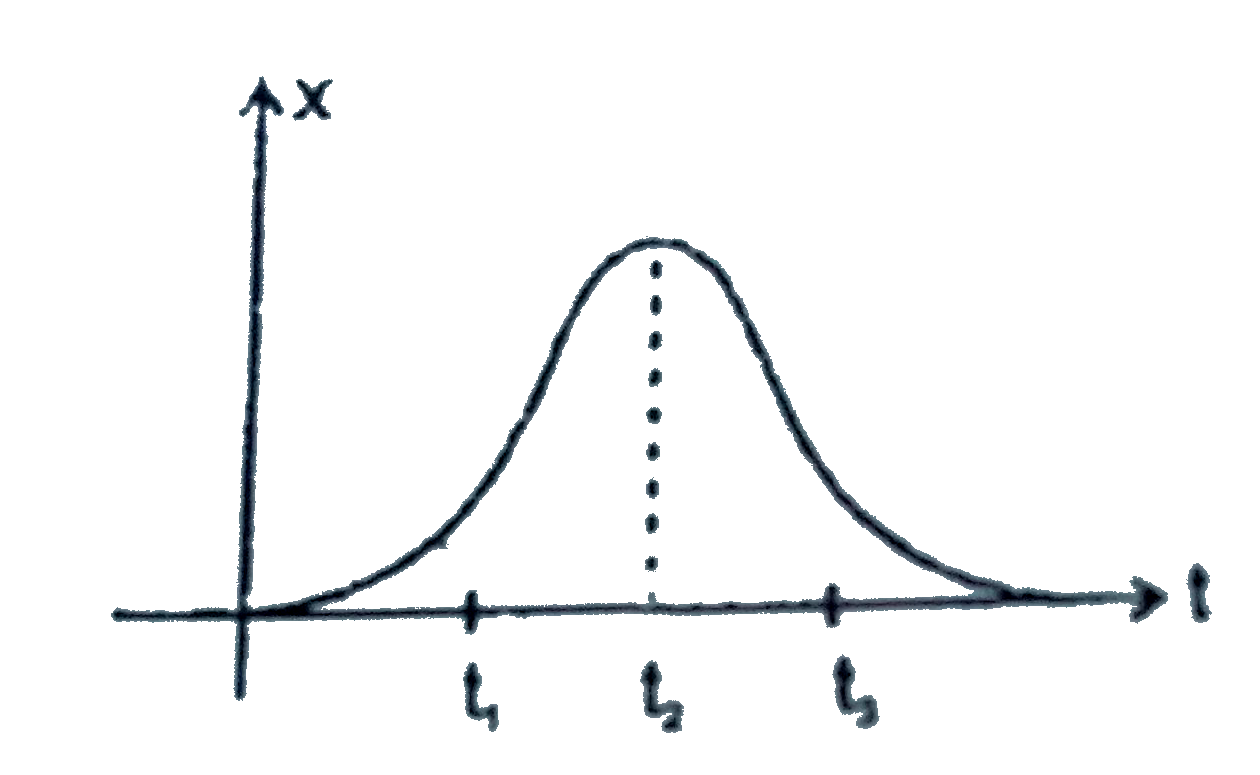Two Dimentional Motion (2D)
Step by step video solution for Two Dimentional Motion (2D) by Physics experts to help you in doubts & scoring excellent marks in Class 12 exams.
Updated on:21/07/2023Similar Questions
Knowledge Check

Given figure shows position-time curve during one dimentional motion of body. Select correct statements.AAt t1,vx and ax are in same direction.BAt t2,vx and ax are in same direction.CAt t1,vx and ax are in opposite direction.DAt t2,vx and ax are in opposite direction.Projectile motion is a combination of two one-dimensional motion: one in horizontal and other in vertical direction. Motion in 2D means in a plane. Necessary condition for 2D motion is that the velocity vector is coplanar to the acceleration vector. In case of projectile motion, the angle between velocity and acceleration will be 0∘<θ<180∘. During the projectile motion, the horizontal component of velocity ramains unchanged but the vertical component of velocity is time dependent. Now answer the following questions:
A particle is projected from the origin in the x-y plane. The acceleration of particle in negative y-direction is α. If equation of path of the particle is y=ax−bx2, then initial velocity of the particle isA√α2bB√α(1+a2)2bC√αa2D√αba2Projectile motion is a combination of two one-dimensional motion: one in horizontal and other in vertical direction. Motion in 2D means in a plane. Necessary condition for 2D motion is that the velocity vector is coplanar to the acceleration vector. In case of projectile motion, the angle between velocity and acceleration will be 0∘ltθlt180∘. During the projectile motion, the horizontal component of velocity ramains unchanged but the vertical component of velocity is time dependent. Now answer the following questions:
An object is projected from origin in x-y plane in which velocity changes according to relation →v=aˆi+bxˆj. Path of particle isAHyperbolicBCircularCEllipticalDparabolic
Give two examples of two dimensional motion.
View SolutionProjectile motion is a two dimensional motion with constant acceleration. Is this statement true or false?
View SolutionState in the following cases, whether the motion is one, two or three dimensional motion is one, two or three dimesional motion: (a) a dite fluing onwindy day (b) a speeding car on a long straight high way (c ) a carrom coin rebounding from the side if the board (d) a plane revolving around its star.
View SolutionProjectile motion is a combination of two one-dimensional motion: one in horizontal and other in vertical direction. Motion in 2D means in a plane. Necessary condition for 2D motion is that the velocity vector is coplanar to the acceleration vector. In case of projectile motion, the angle between velocity and acceleration will be 0∘<θ<180∘. During the projectile motion, the horizontal component of velocity ramains unchanged but the vertical component of velocity is time dependent. Now answer the following questions:
A body is projected at angle of 30∘ and 60∘ with the same velocity. Their horizontal ranges are R1 and R2 and maximum heights are H1andH2, respectively, then
A body is projected at angle of 30∘ and 60∘ with the same velocity. Their horizontal ranges are R1 and R2 and maximum heights are H1 and H2, respectively, then
View SolutionAssertion : Projectile motion is called a two dimensional motion, although it takes place in space.
Reason : In space it takes place in a plane.
View Solution
